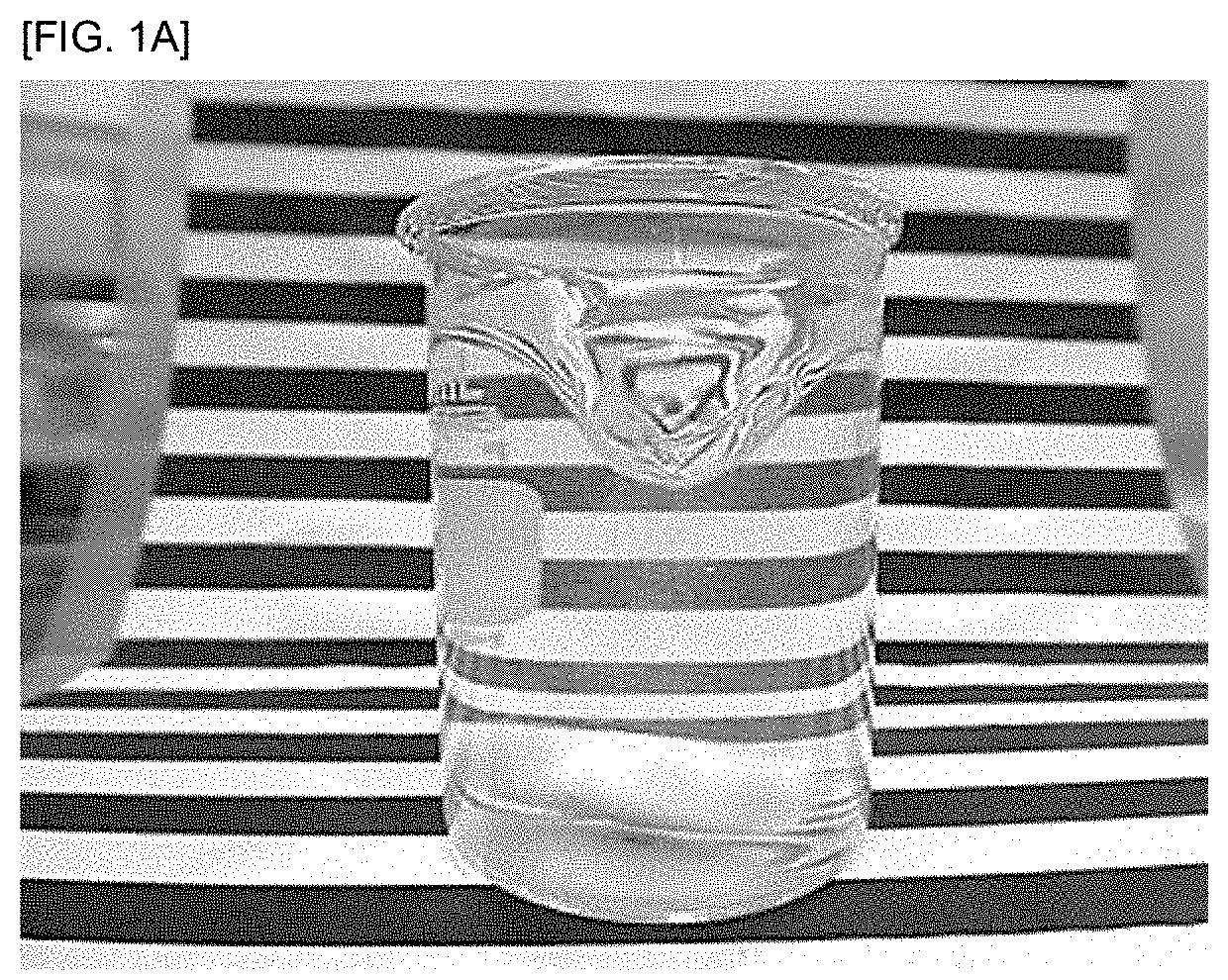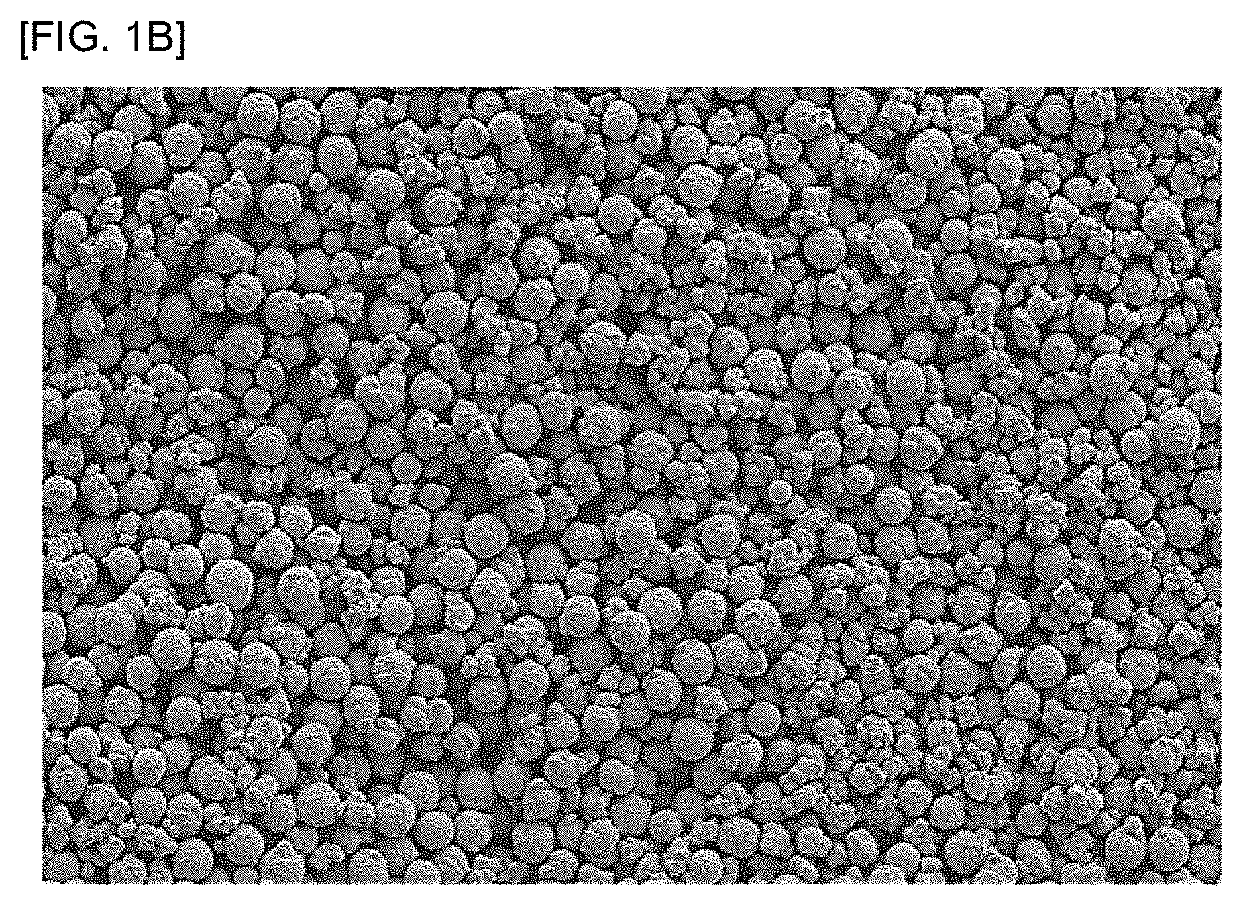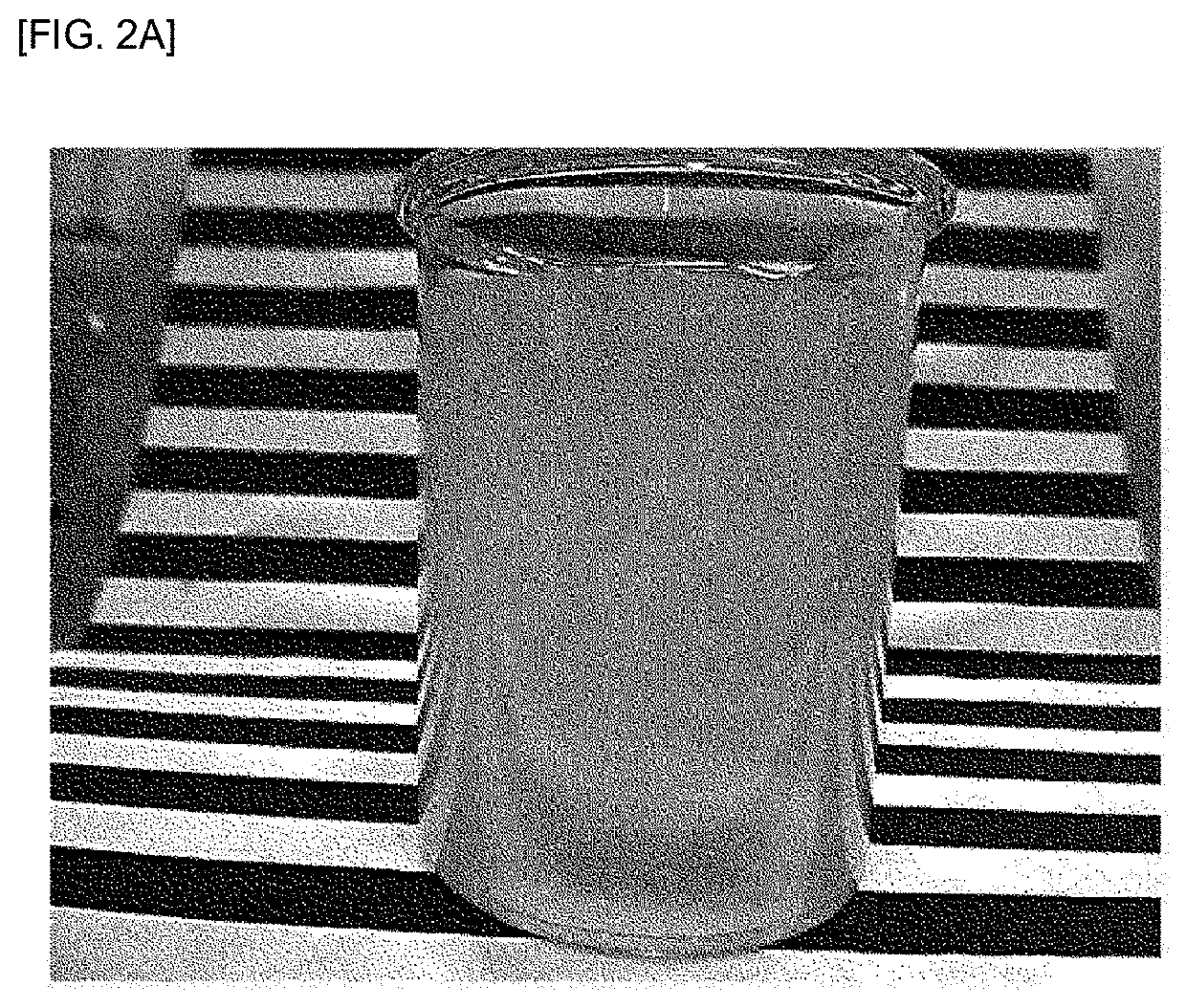Stannous oxide powder and method for producing same
- Summary
- Abstract
- Description
- Claims
- Application Information
AI Technical Summary
Benefits of technology
Problems solved by technology
Method used
Image
Examples
example 1
[Production of Stannous Oxide]
[0057]1 L of an aqueous 100 g / L ammonium bicarbonate solution was placed in a 3 L beaker, heated and maintained at 65 to 70° C., and 1 L of a stannous sulfate solution having a tin concentration of 80 g / L was dropped over 2 hours to the aqueous ammonium bicarbonate solution with stirring by a stirrer, thereby carrying out a neutralization reaction (a first stage). After the reaction, the temperature was further raised to 75 to 80° C. and maintained for 1 hour (a second stage). The temperature during the reaction was maintained for a certain period of time in two stages: the first stage and the second stage as described above. During the neutralization reaction, the dissolved ammonium bicarbonate solution was added for pH adjustment. Table 1 summarizes the details of the conditions. Particulate stannous oxide was thus obtained. The reaction formula for the neutralization reaction is shown below:
SnSO4+2(NH4)HCO3→SnO+(NH4)2SO4+H2O+2CO2.
[Evaluation of Stann...
examples 2 to 6
[0067]Examples 2 to 6 were carried out according to the same procedure as that of Example 1. Details of the conditions are summarized in Table 1. In Examples 2, 5 and 6, a carbon dioxide gas was blown simultaneously with the introduction of the aqueous ammonium bicarbonate solution. In Example 2, aqueous ammonium was further added simultaneously with the introduction of the aqueous ammonium bicarbonate solution. The resulting particulate stannous oxide was evaluated according the same manners as those of Example 1. The same is true for the solubility test. The results obtained are summarized in Table 1. FIG. 1A shows a photograph of the appearance of the solution at the time when it was determined that the dissolution was completed, for Example 4.
[SEM Image]
[0068]The resulting particulate stannous oxide was observed by SEM (Electron Microscope S-3000N from Hitachi High-Technologies Corporation). A SEM image of the stannous oxide powder for Example 4 is shown in FIG. 1B.
PUM
| Property | Measurement | Unit |
|---|---|---|
| Temperature | aaaaa | aaaaa |
| Temperature | aaaaa | aaaaa |
| Fraction | aaaaa | aaaaa |
Abstract
Description
Claims
Application Information
 Login to view more
Login to view more - R&D Engineer
- R&D Manager
- IP Professional
- Industry Leading Data Capabilities
- Powerful AI technology
- Patent DNA Extraction
Browse by: Latest US Patents, China's latest patents, Technical Efficacy Thesaurus, Application Domain, Technology Topic.
© 2024 PatSnap. All rights reserved.Legal|Privacy policy|Modern Slavery Act Transparency Statement|Sitemap



